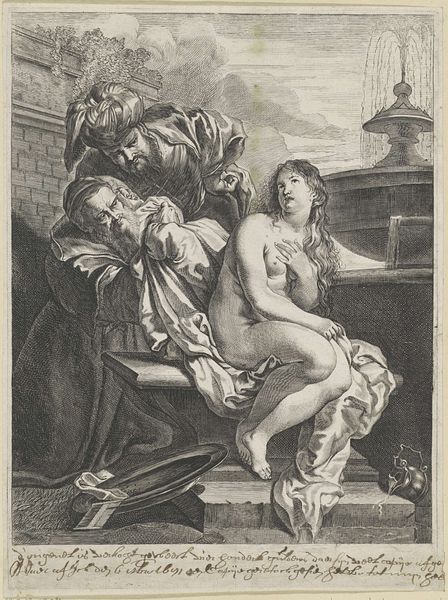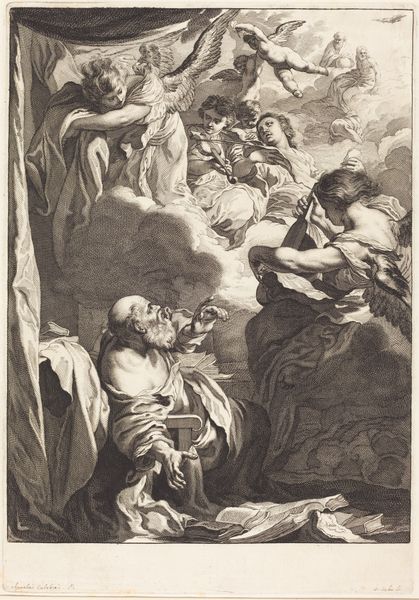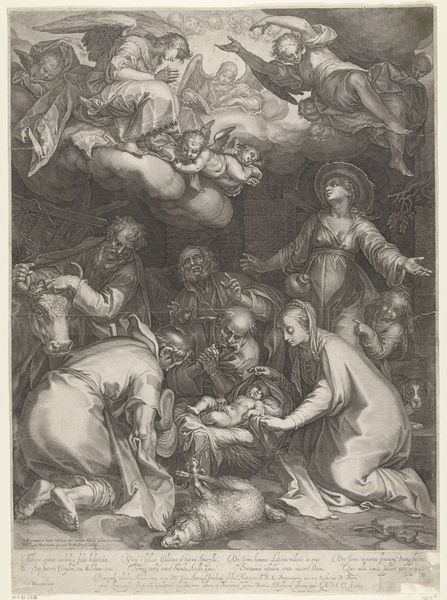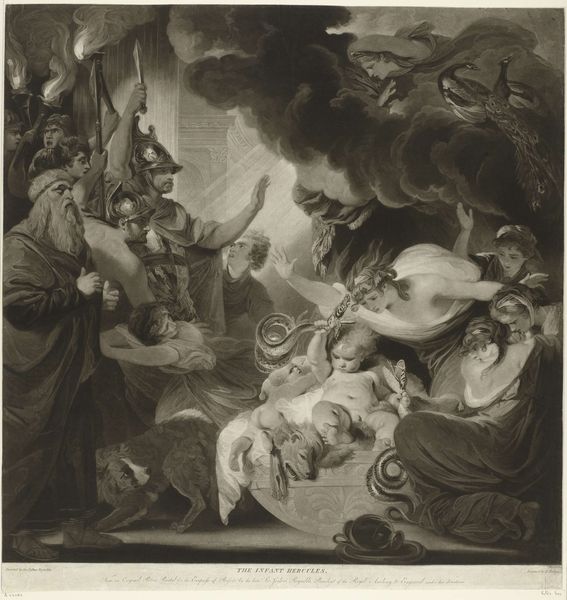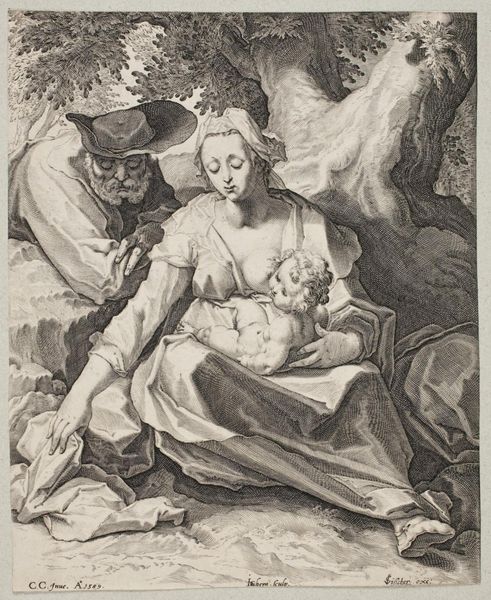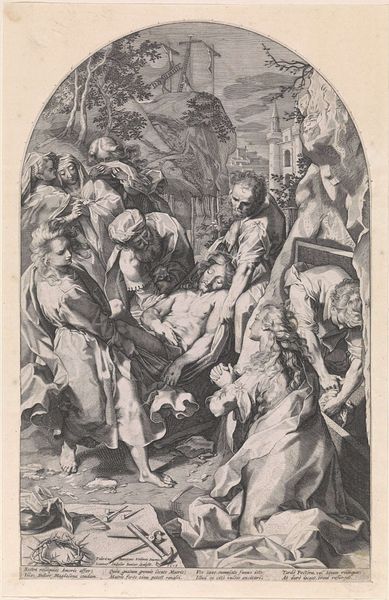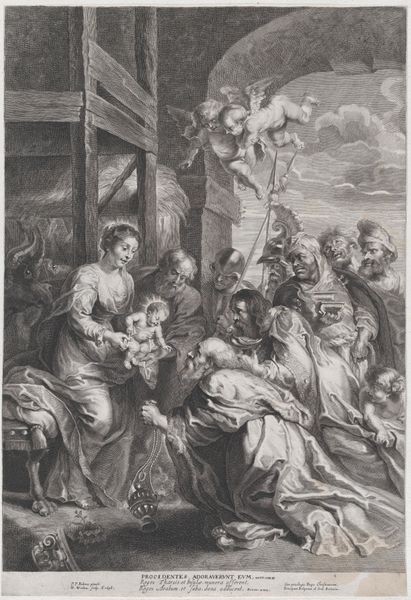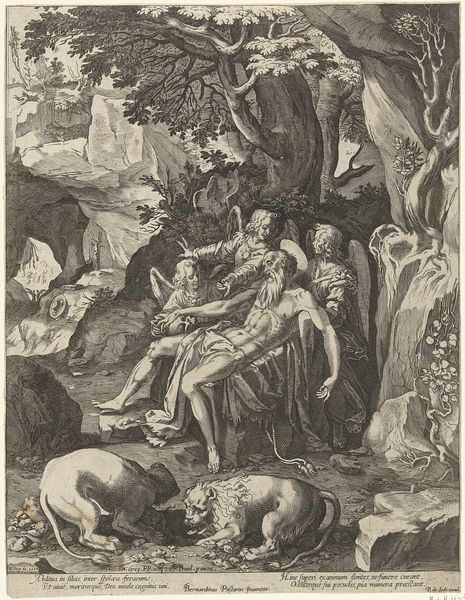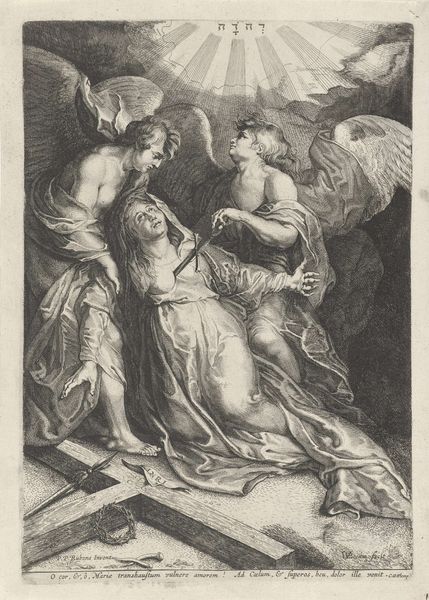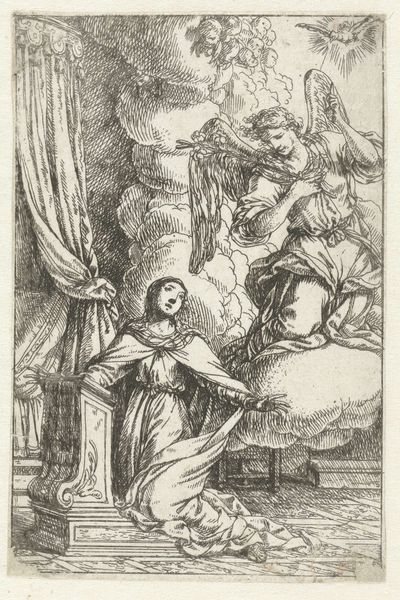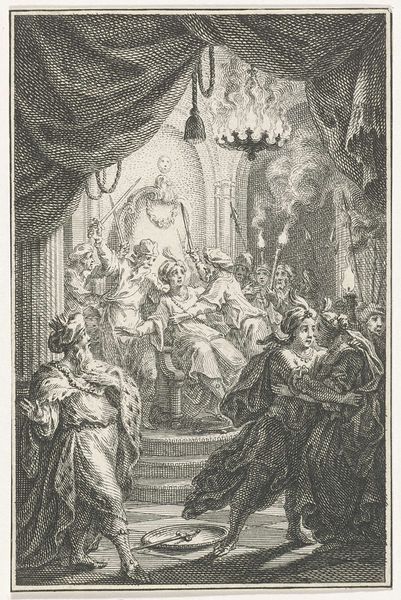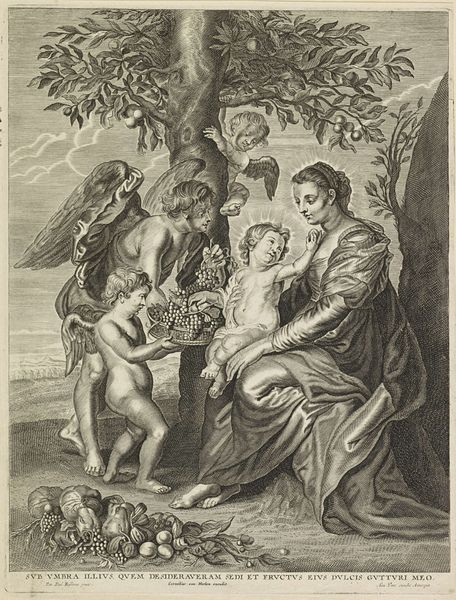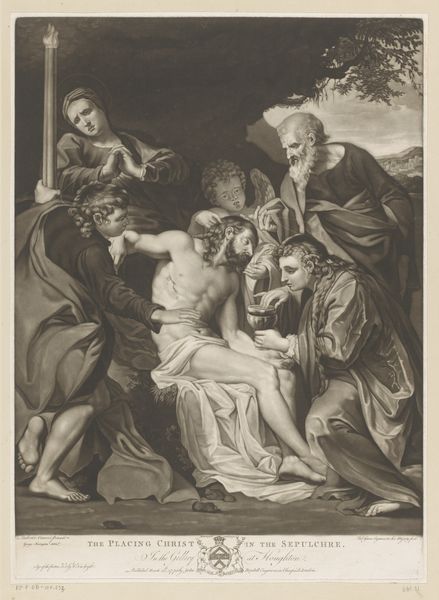
engraving
#
baroque
#
old engraving style
#
figuration
#
history-painting
#
engraving
Dimensions: height 430 mm, width 324 mm
Copyright: Rijks Museum: Open Domain
Curator: Looking at this engraving, “Christuskind kroont H. Catharina,” produced sometime between 1631 and 1652 by Pieter de (II) Jode, I’m immediately struck by the dreamlike quality created by the delicate lines and the dramatic composition. It's an ethereal scene, almost vibrating with devotion. Editor: For me, the work reflects the Baroque period’s intricate relationship between religious authority and the art world. Patronage clearly played a huge role; religious orders commissioned such prints for various purposes – education, propaganda, even simply demonstrating piety and allegiance. This piece probably circulated within elite religious circles, reinforcing specific doctrines. Curator: Absolutely. And considering this print centers on Saint Catherine being crowned by the Christ Child, we see a complex web of power dynamics and gendered religious ideals. The act of coronation, typically performed by a higher authority, here involves a child bestowing honor upon a woman – but only within a rigid, sanctioned spiritual framework. This tells us something about prescribed roles, gender, and avenues available to women in expressing agency during that period. Editor: It’s intriguing how Pieter de Jode translated Baroque aesthetics into printmaking. Engraving allowed wider dissemination of these devotional images compared to, say, oil painting, broadening the reach of religious narratives to diverse social groups, though predominantly those who were literate and had access. What is easily overlooked today is that print served as a very vital communicative tool. Curator: I also can’t ignore how the female figures are positioned and stylized. Notice Saint Catherine's submissive pose versus Mary's composure. They aren’t merely representations of saints; they subtly convey messages regarding appropriate feminine behavior and obedience. This makes me consider how these images actively reinforced certain gendered societal norms, perhaps normalizing male spiritual authority while seemingly exalting female piety. Editor: Thinking about reception, this engraving likely prompted varied interpretations even then. Elites probably valued the image’s exquisite detail and demonstration of theological erudition, while the masses, often targeted for their presumed spiritual deficit, likely found solace in its simple depiction of divinity. Regardless, tracing such pathways can broaden perspectives on visual art’s potential in influencing individual attitudes and behaviors throughout history. Curator: Indeed. Through close consideration of art history intertwined with societal complexities, we can extract greater significance from artworks like these, which reveal themselves to be so much more than devotional imagery. Editor: Precisely, it moves us beyond a static view and towards appreciating the living, breathing social history embedded within.
Comments
No comments
Be the first to comment and join the conversation on the ultimate creative platform.

